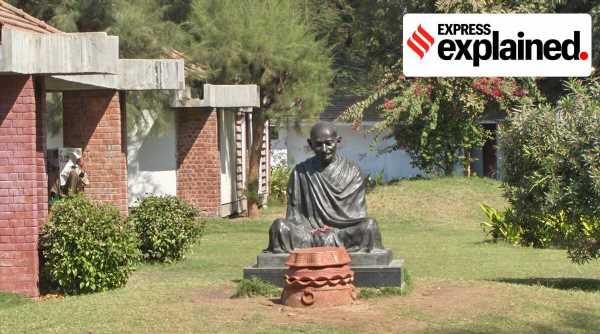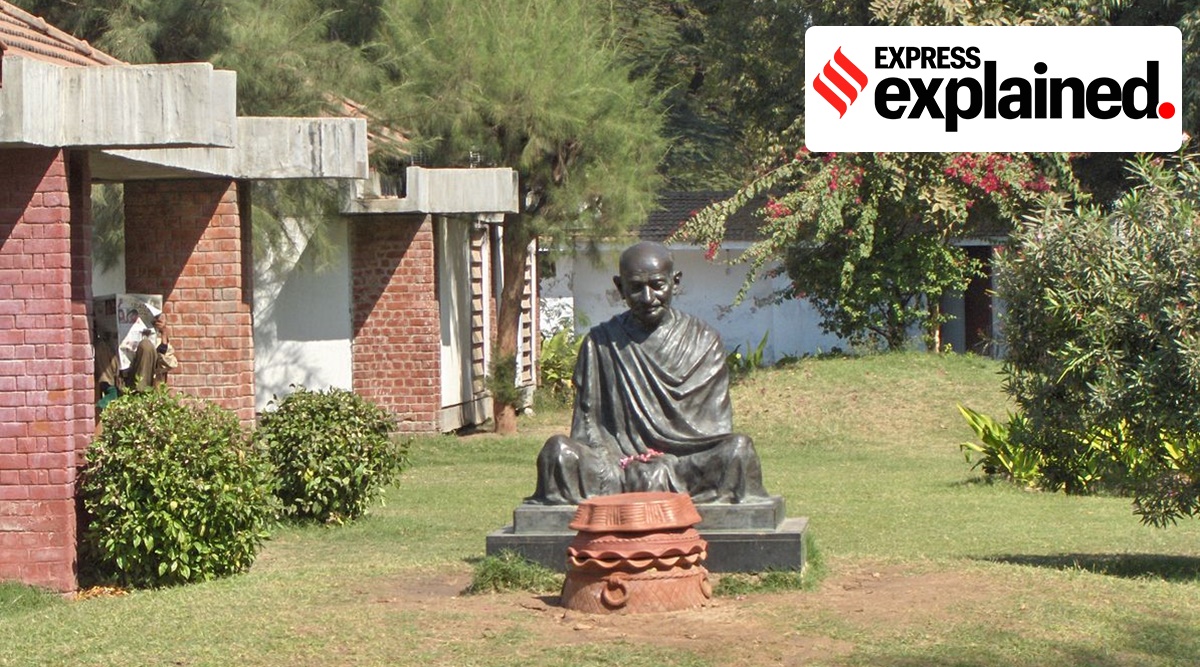There are some 263 families on the premises who are tenants of the respective trusts on whose land they reside and will have to be relocated in order to proceed with the Gandhi Ashram redevelopment plan as envisaged by the planners.
In October 2019, Prime Minister Narendra Modi’s proposal for a larger Sabarmati Ashram complex had caused much anxiety among its Trustees and residents, with the ashramwasis — third or fourth generation of ashram residents —sitting on protests fearing eviction. Over 250 families residing in the Gandhi Ashram in Ahmedabad will have to be relocated as part of the redevelopment plan of the area.
Here is a look at who are the residents of Gandhi Ashram and what happens to them now.
Who are the ashramwasis?
Descendants of the people who were brought into the Harijan Ashram that Mahatma Gandhi established on the bank of the Sabarmati river in 1917, to do various tasks and help run the ashram, and those who continued to stay on the premises, now controlled by one or the other trust, call themselves ashramwasis. They comprise all communities as Gandhi believed in ‘sarva dharma sambhav’, says a resident. Current residents include OBCs, Dalits, a few Muslims and some Brahmins.
There are some 263 such families on the premises who are tenants of the respective trusts on whose land they reside and will have to be relocated in order to proceed with the Gandhi Ashram redevelopment plan as envisaged by the planners, which include the Government of Gujarat, the Union Culture Ministry under the direct supervision of the Prime Minister’s Office. The Gujarat government has offered them options of a one-time compensation of Rs 60 lakh, or a tenement just outside the proposed expanded ashram complex or a flat in another area in Ahmedabad.
What do the ashramwasis do?
Many of them do different jobs than what their forefathers did in Gandhi’s time. Like one resident who is employed with the Government of Gujarat and does not wish to be identified, said, “my grandfather kept the cows of the ashram in the gaushala and delivered milk”. This resident’s father is a member of one of the trusts.
Ranchchodbhai Gohil, 89, worked in the handmade paper factory called Kalam Kush. The products of Kalam Kush, made from waste cotton fabric without chemicals, are now bought by the Gujarat government. Sources told The Indian Express that the government buys Rs 1 crore worth of such paper each year.
Some are involved in Khadi-weaving like a 62-year old who works on a wooden handloom, in the Imam Manzil campus. Some things still produced here are soap, oil, Ambar Charkha, its looms and accessories. All these products are sold under Gujarat Khadi Gramudyog Mandal, one of the six trusts.
Why did the ashramwasis protest?
In October 2019, when suggestions to redevelop the Gandhi ashram were made by Prime Minister Narendra Modi, fearing eviction, the residents, under the banner of Gandhi Ashram Bachao Samiti, organised a sit-in at the Hriday Kunj in January last year. The Sabarmati Ashram Preservation and Memorial Trust (SAPMT) put out a statement back then that a lack of formal communication was “causing anxiety, concerns and misunderstanding at many levels”.
The Sabarmati Harijan Ashram Trust which holds a large chunk of land in the area, supported the residents’ cause and wrote to Chief Minister Vijay Rupani to hold discussions with the residents about the plan. The area managed by SAPMT has only three of the tenant families.
Newsletter | Click to get the day’s best explainers in your inbox
The six trusts among whom the original ashram land was split are – Gujarat Harijan Sevak Sangh, Sabarmati Harijan Ashram Trust, Sabarmati Ashram Gaushala Trust, Gujarat Khadi Gramudyog Mandal, Khadi Gramudyog Prayog Samiti and SAPMT.
What now?
While the ashramwasis are not against the redevelopment plan, many wish to “retain their address as ‘Gandhi Ashram’”, said a resident. To which the state government has agreed. The tenement to be developed just outside the larger complex, is for such residents. At least 50 have taken the monetary compensation. Some also want to be associated with the ashram project in some way. “For us this bhoomi (land) is important. We don’t want compensation,” a resident said.
The original ashram
On his return from South Africa, Gandhi established the first ashram at Kochrab in 1915 which he shifted after the plagueto a piece of open land on the banks of the river Sabarmati in 1917 for experiments in farming, animal husbandry, cow breeding, Khadi and related activities.
Originally called Harijan Ashram, spread over 120 acres, the ashram was split into six trusts later. Of these the Gandhi Ashram area run by SAPMT has the Gandhi and Kasturba’s residence — Hriday Kunj, Vinoba-Mira kutir, a guesthouse- Nandini — where prominent people like Rabindranath Tagore stayed, Magan Nivas where Gandhi’s nephew Maganlal Gandhi stayed and managed the ashram, besides Gandhi’s writing desk, and spinning wheel among his personal artefacts, and a museum displaying books, manuscripts and photocopies of his correspondence, and photographs.
Source: Read Full Article



